One of the highlights of my relentless round-the-world trip with Aeroplan would be spending four days in Kazakhstan.
The country, and the region of Central Asia in general, has long fascinated me ever since those days I spent gazing at world maps as a young boy, so I found myself in a mild state of disbelief as I cleared immigration at Nur-Sultan Nazarbayev International Airport that I was finally here.
To be perfectly honest, my knowledge of Kazakhstan prior to this trip was largely limited to the lessons learned from a certain 2006 mockumentary film (and this seems to be true of most people living in the Western world, based on the responses I got when I mentioned I was going to Kazakhstan).
So in this article, I’ll share with you all of the sights and sounds I encountered during my time in Kazakhstan, which left me with a newfound appreciation for what is very much an aspiring Glorious Nation in its own right.
Day 1: Frosty First Impressions
Nur-Sultan is Kazakhstan’s capital, having been known as Astana until it was renamed in honour of the country’s former president, Nursultan Nazarbayev, in March 2019. You may also recognize this name from the capital’s airport, and indeed, as I’d come to learn during my time in the country, the reach of President Nazarbayev’s cult of personality extends far and wide in this part of the world.
As if to drive home that point to first-time visitors, the city’s premier attraction, the Baiterek Tower – where I embarked after checking in to the St. Regis Astana and filling up on breakfast in the morning – turned out to be essentially a shrine to President Nazarbayev as well.
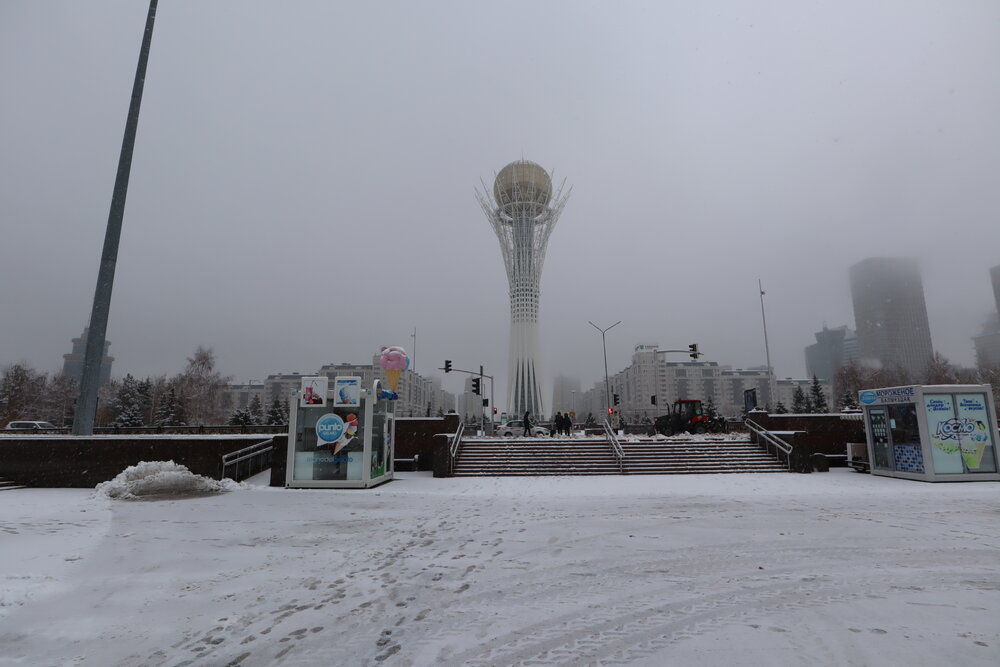
Baiterek Tower
The distinctive Baiterek Tower looks like a cross between an egg in a bird’s nest and an alien landing device, and its symbolic of the outlandish futuristic architecture that dominates Nur-Sultan’s skyline. On this morning, its central orb-like observation hall, located 97 metres above ground level, was barely visible in the heavy fog.
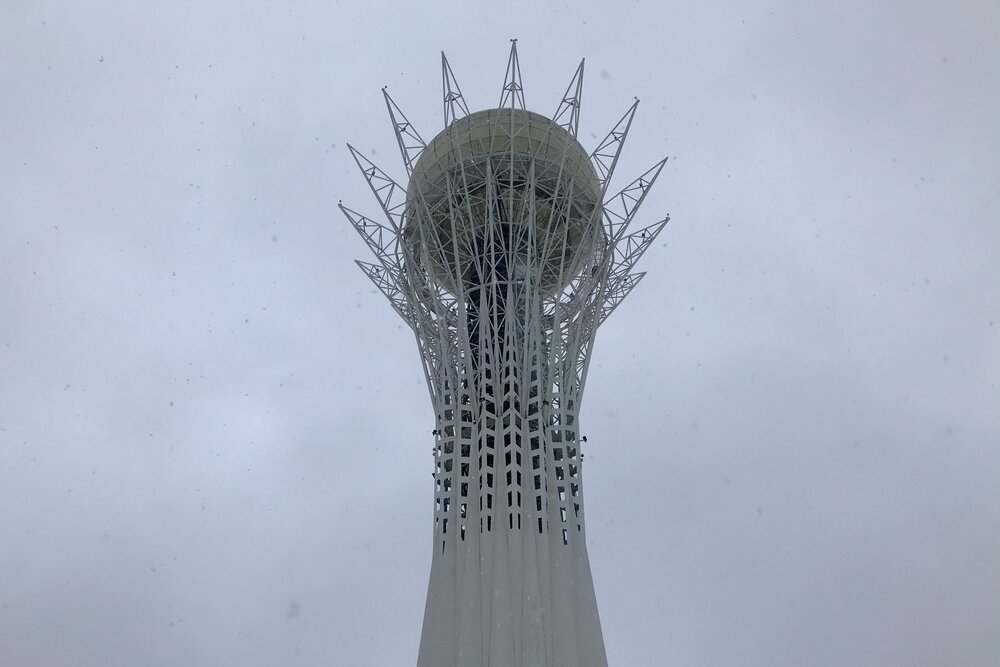
Baiterek Tower
There was nary a foreign visitor in sight as I made my way up the elevators to the observation hall. The windows were tinted from the inside, and combined with the poor visibility, meant that I was only treated to a limited version of the usual sweeping views of Nur-Sultan.
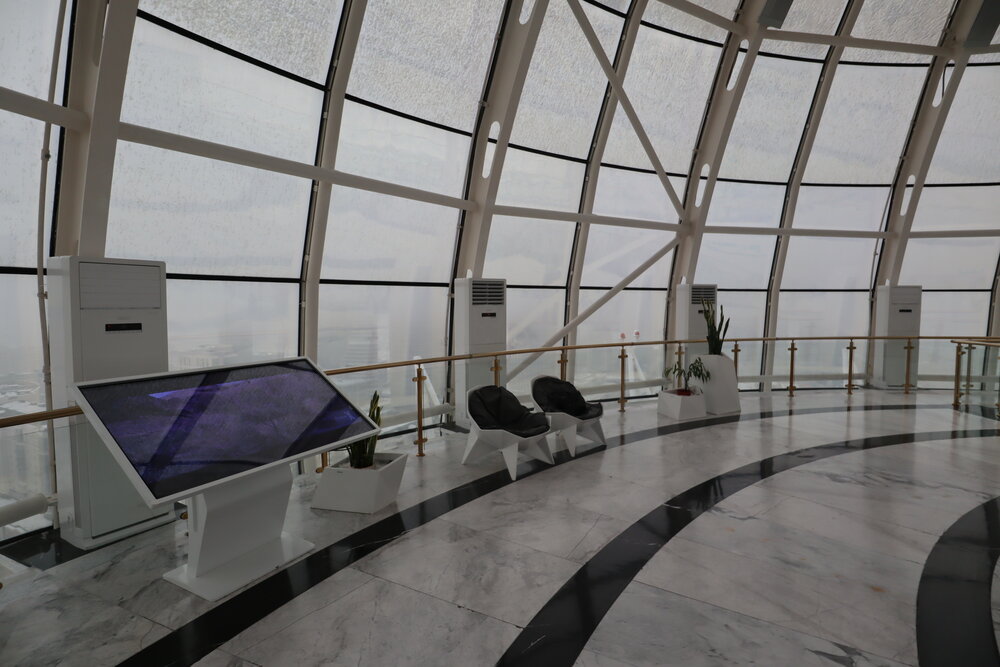
Baiterek Tower – Observation deck
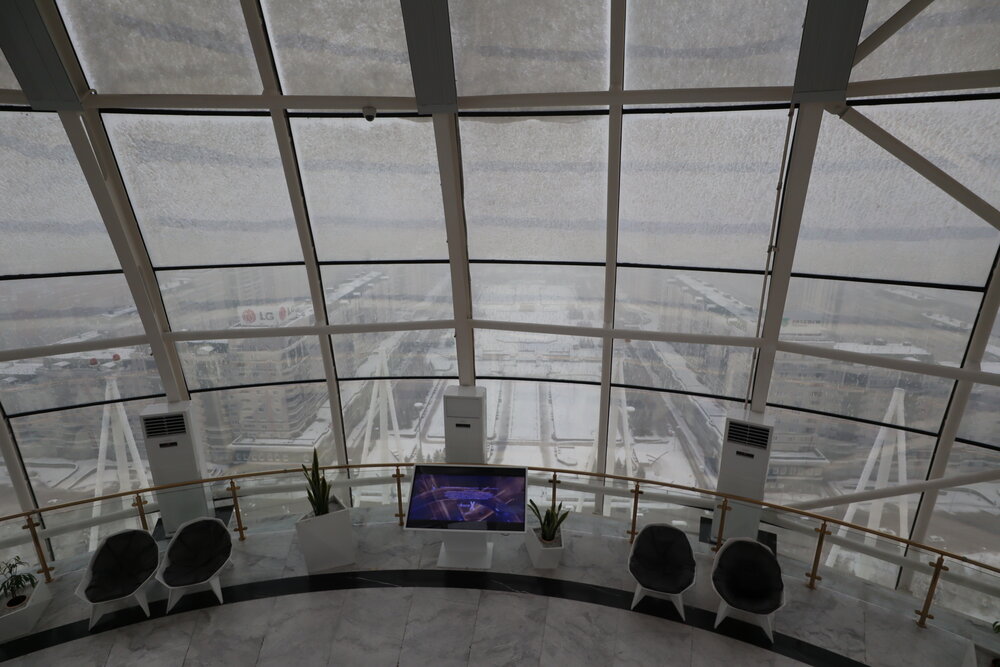
Baiterek Tower – Observation deck
Heading up to the second storey of the observation deck, you arrive at one of the central features of the Baiterek Tower: a gilded handprint of President Nazarbayev, in which visitors are encouraged to place their own hand and make a wish.
A small queue of local visitors had formed to place their hands on the pedestal, so I felt a sense of obligation to take part as well, making a wish that my first day in Kazakhstan may be graced by some better weather.
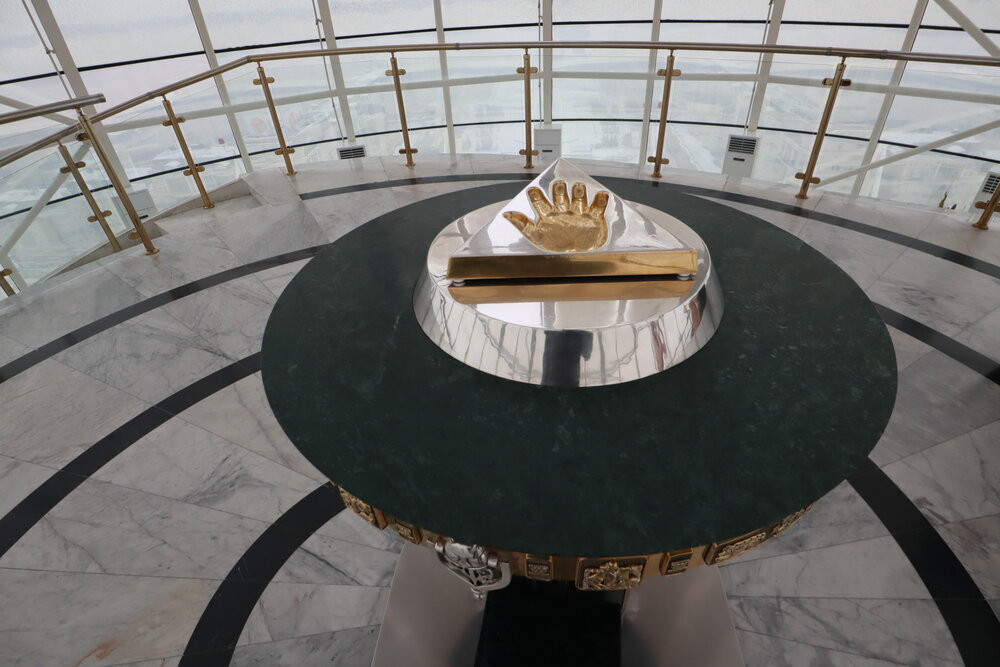
Baiterek Tower – President Nazarbayev handprint
While an interesting building to visit, there’s not too much to do at the Baiterek Tower once you’ve taken the elevator up to the top, so I continued to my next stop: the Khan Shatyr Entertainment Centre just down the boulevard from the Baiterek.
The Khan Shatyr would be yet another example of the futurist architecture that stretches as far as the eye can see here in Nur-Sultan.
As a former Soviet Socialist Republic, one of Kazakhstan’s priorities upon independence in 1991 was to establish a distinct modern Kazakh identity as far-removed as possible from its Soviet past. Hence, when it came time to build out a brand-new planned city as the capital, the urban planners essentially invited the world’s top architects to Astana, as it was then known, and let their imagination run wild.
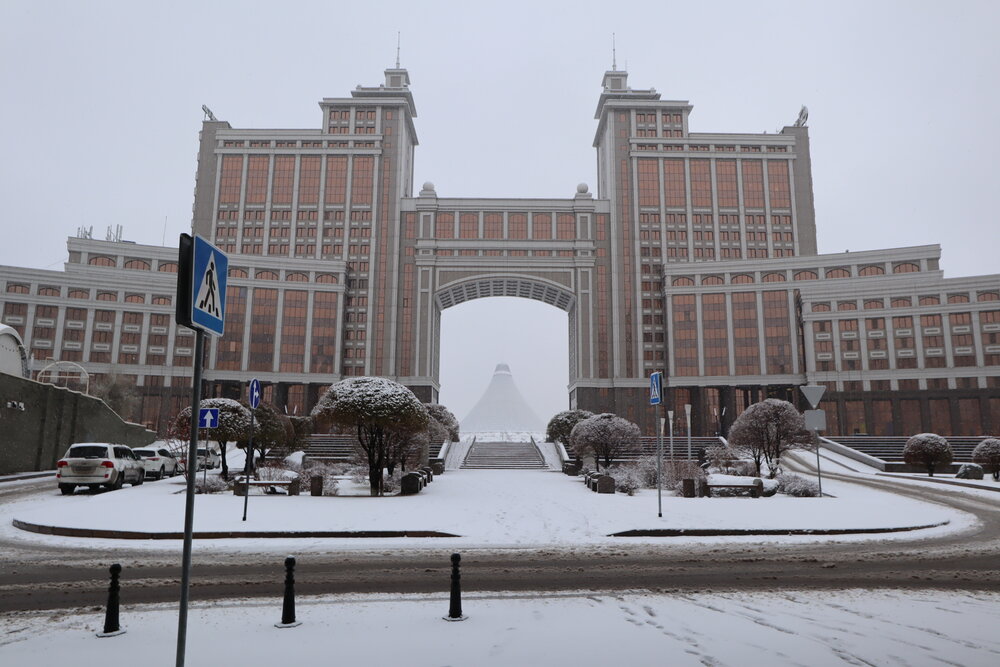
JSC KazTransOil building, with Khan Shatyr in the background
As a result, the 15-minute walk from the Baiterek Tower to the Khan Shatyr must’ve been one of the most surreal moments I’ve ever had as a traveller. Here I was in a completely foreign city, in the midst of heavy snowfall that meant there was not a single other soul in sight, surrounded by a series of imposing glass-surface buildings that came in all sorts of geometric shapes.
I felt as though I had woken up in a dystopian Disneyland of sorts, and truly struggled to make sense of what I was seeing in front of me as I trudged forward in the snow.
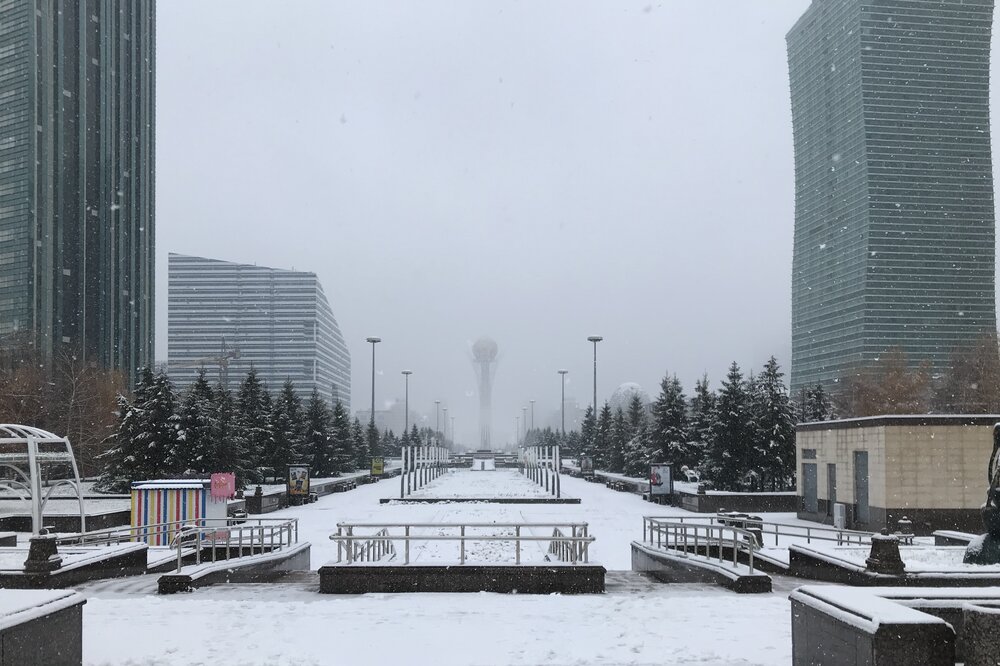
View of Baiterek Tower
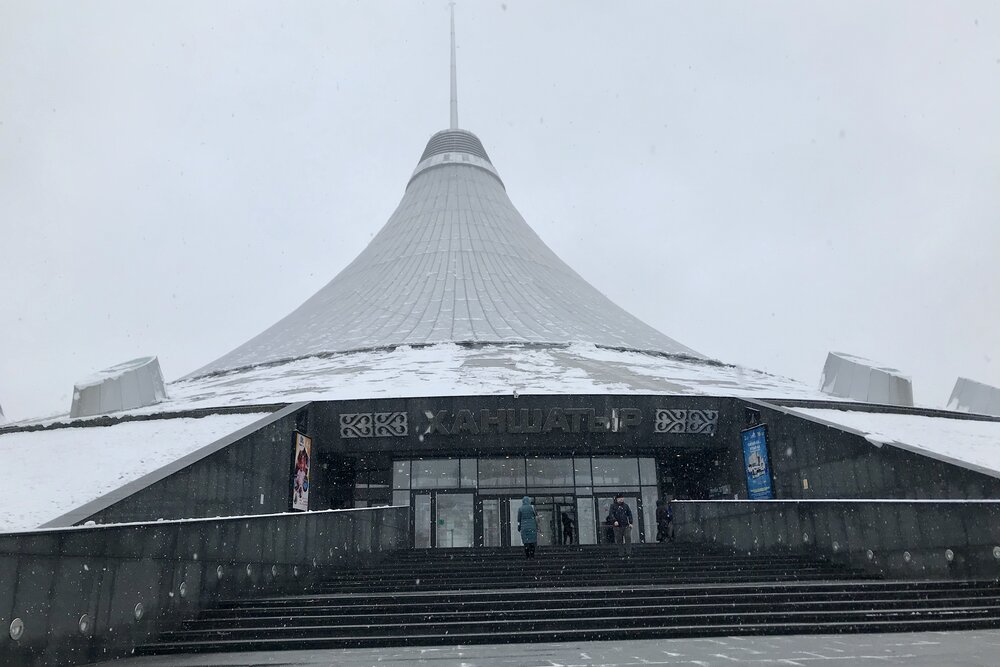
Khan Shatyr Entertainment Centre
The Khan Shatyr Entertainment Centre didn’t exactly snap me out of the dream-like state, either. This place is essentially a shopping and entertainment venue housed within a 150-meter-high transparent tent, and I did some shopping, stopped for a cup of coffee in the open-air patio, and then bought some lunch in the food court, all the while struggling to make sense of the giant tent-pole towering above me.
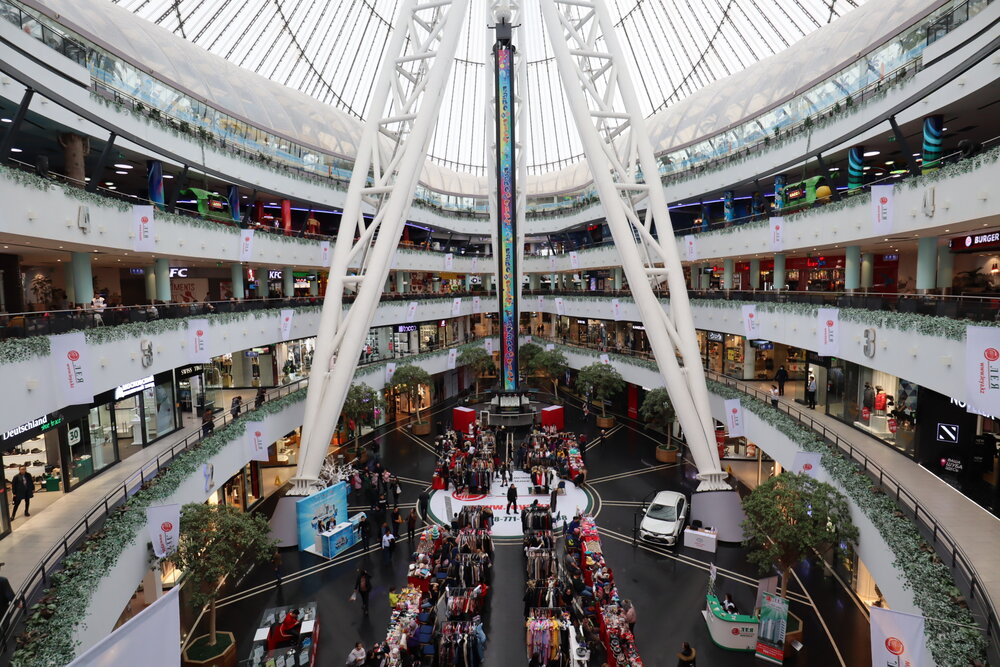
Khan Shatyr Entertainment Centre
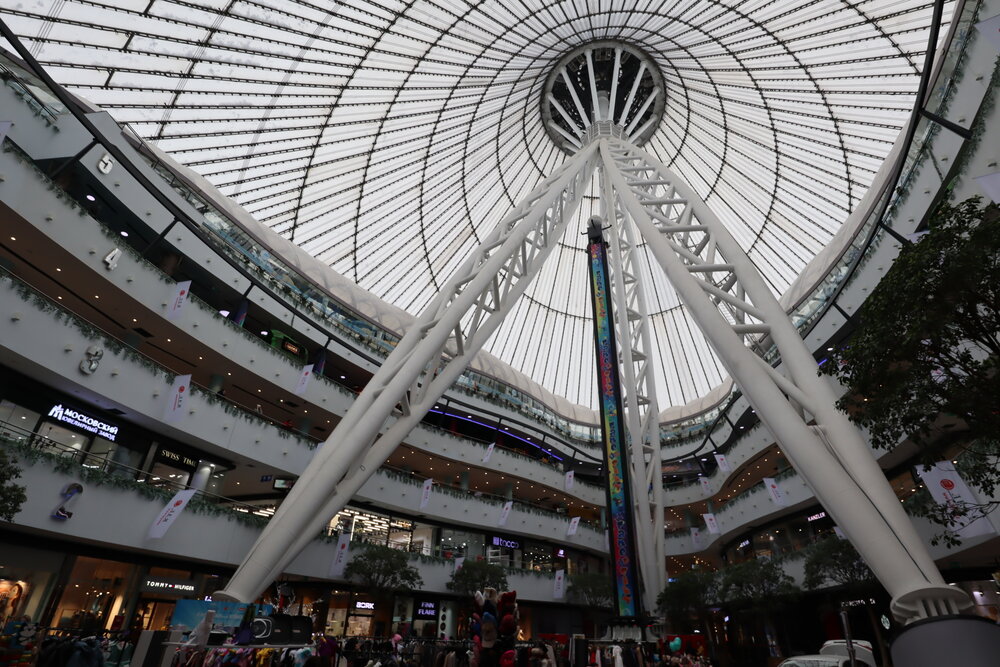
Khan Shatyr Entertainment Centre
As I stepped outside, I was happy to see that my wishes from earlier had been granted: the snow had cleared up and the locals were out and about on the streets again. My surroundings finally looked less like a simulated snowy environment straight out of Black Mirror, and more like the capital city of a sovereign nation.
Some places around the world seem eager to spill their secrets to you immediately upon arrival, but I must say, Nur-Sultan was about as far from that kind of place as it gets. And those mixed feelings – equal parts confusion and curiosity – were only reinforced as I took one final detour to the spherical glass structure of the Expo 2017 Astana before heading back to the St. Regis for some much-needed rest.
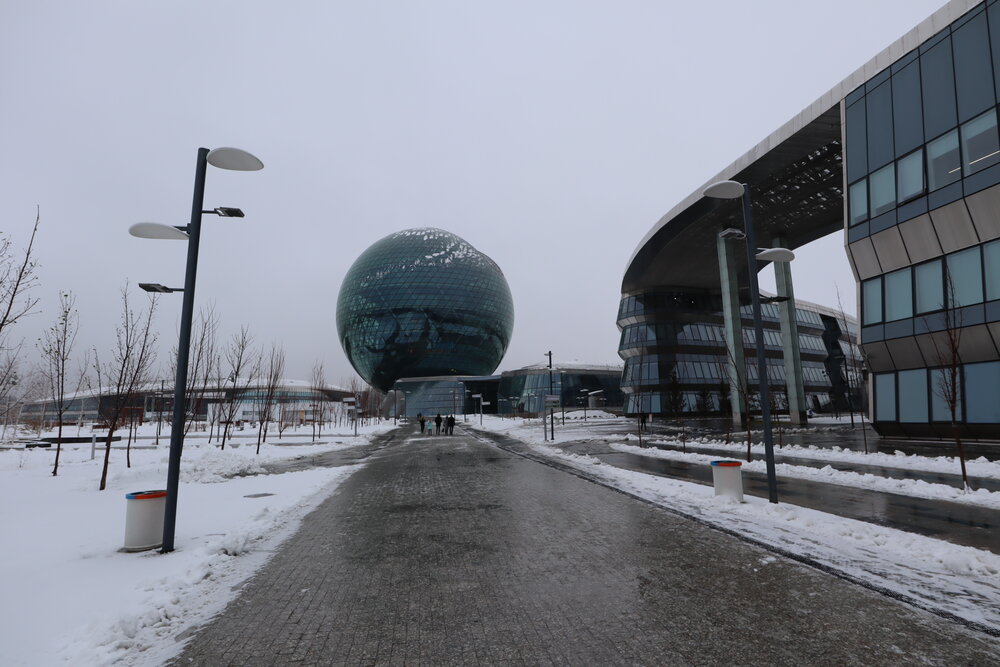
Expo 2017 Astana
Day 2: History & Tradition
After breakfast on the second morning, I headed out to the Hazrat Sultan Mosque in the eastern part of town across the Ishim River. Most of the “Stans” are predominantly Islam, and the Hazrat Sultan holds regional significance as the largest mosque in all of Central Asia.
The Hazrat Sultan was probably the only building in Nur-Sultan that was not only visually stunning but actually felt tied to some kind of cultural identity, rather than simply happening to be part of a city that feels it should be erecting visually stunning buildings left, right, and centre.
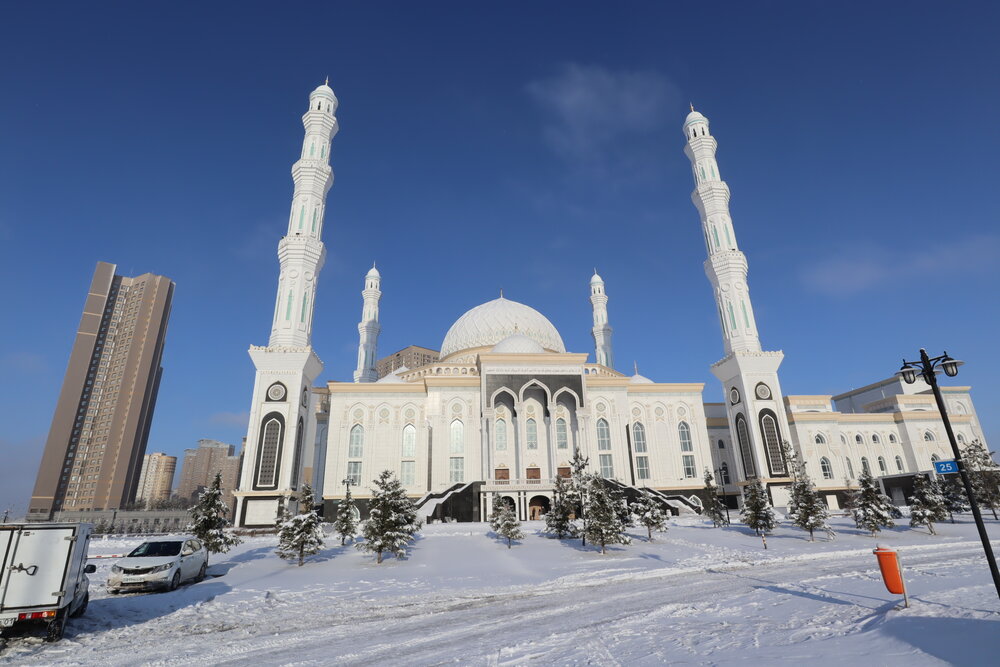
Hazrat Sultan Mosque
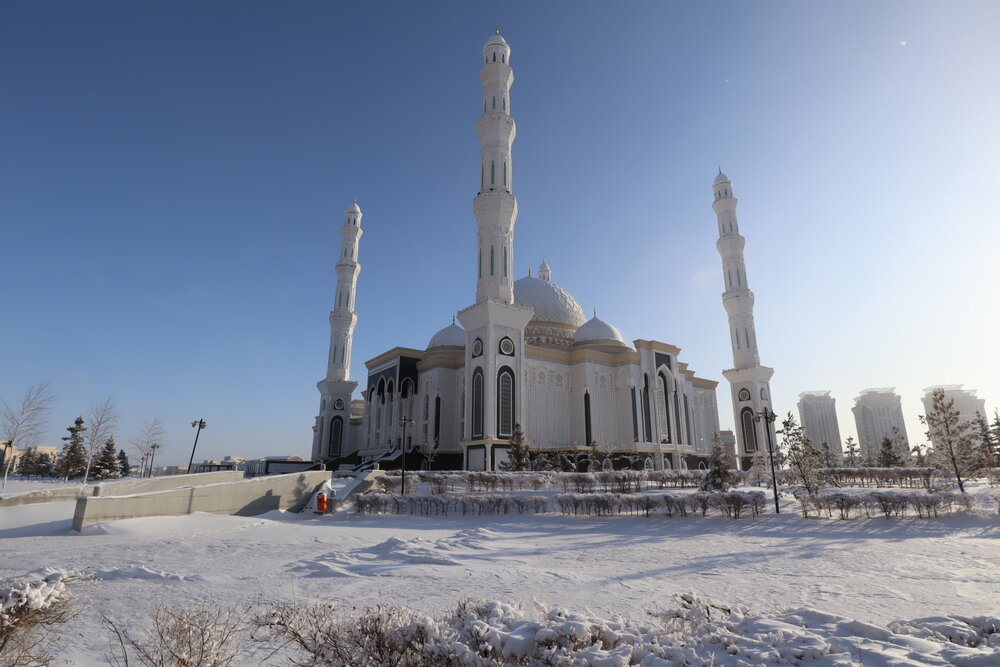
Hazrat Sultan Mosque
The snow-clad Hazrat Sultan looked beautiful from afar, and that impression was only compounded as I found the entrance and made my way inside.
My goodness, the interiors were an absolute joy to behold, especially in a state of total quietness, with only a few other visitors here for their daily worship.
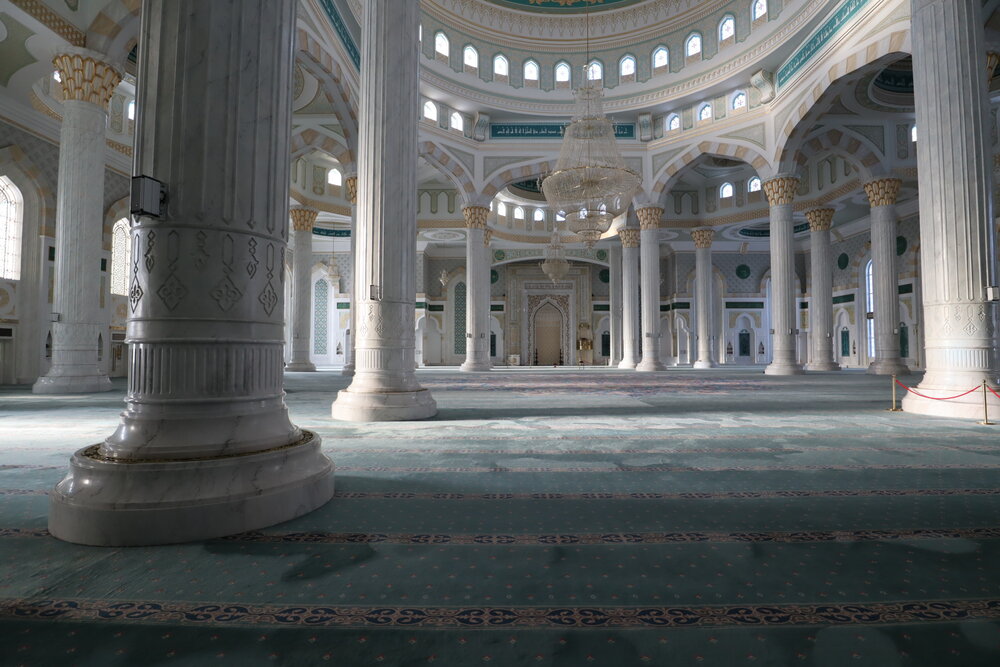
[foogallery id=”16727″]
The central dome was especially impressive, effortlessly combining the distinctive pointed arches of Islamic architecture with Kazakhstan’s national colours of gold and sky blue. I must’ve spent a good 30 minutes inside the mosque, wandering from end to end and admiring the interiors from every angle possible.
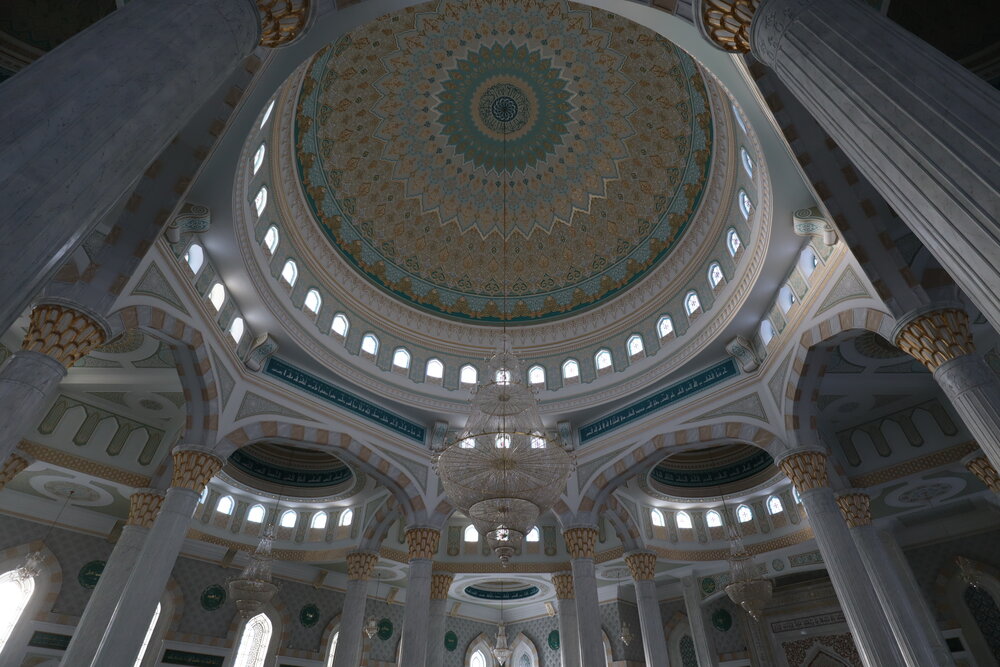
Hazrat Sultan Mosque
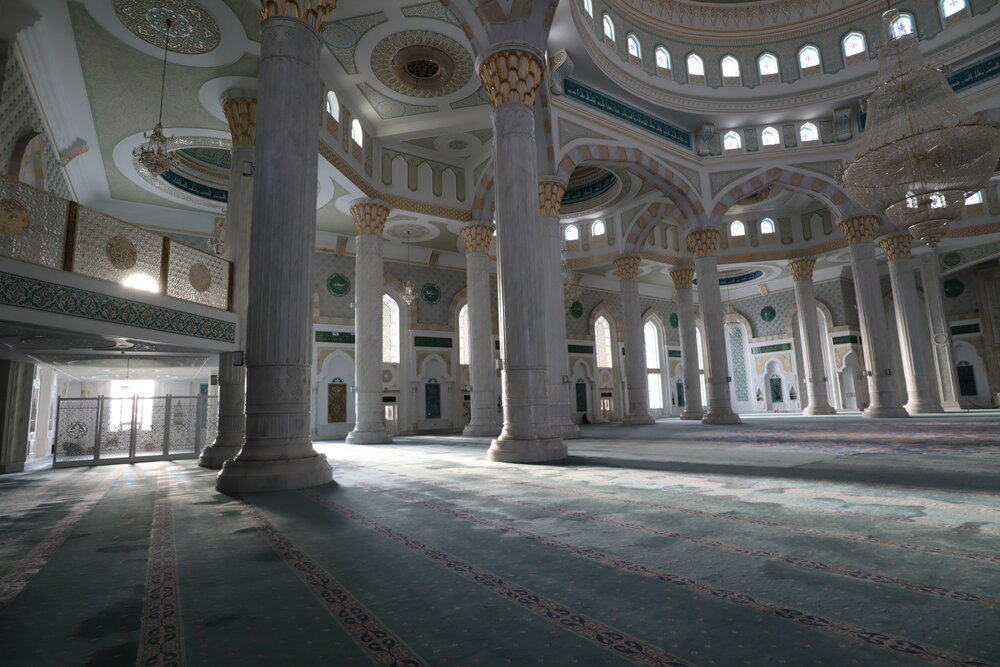
Hazrat Sultan Mosque
As I wrapped up my visit to the Hazrat Sultan, I checked my Google Maps and saw that the next destination, the National Museum, was only one city block away. I decided to skip the Yandex Taxi this time and make the walk over – Google said it’d be only 20 minutes.
However, I had badly underestimated how cold it gets here in Nur-Sultan – the city lies at 51˚N of latitude, about the same as Calgary, so the temperature had dropped to a bone-chilling –9˚C on this early November day. The jacket I had packed for this trip, which in no way resembled a proper winter jacket, was clearly struggling to hold its own after just a few minutes.
Braving the winter winds, I eventually made it to the National Museum in a somewhat timely fashion, giving myself a few hours to explore before having to catch my next flight in the afternoon.
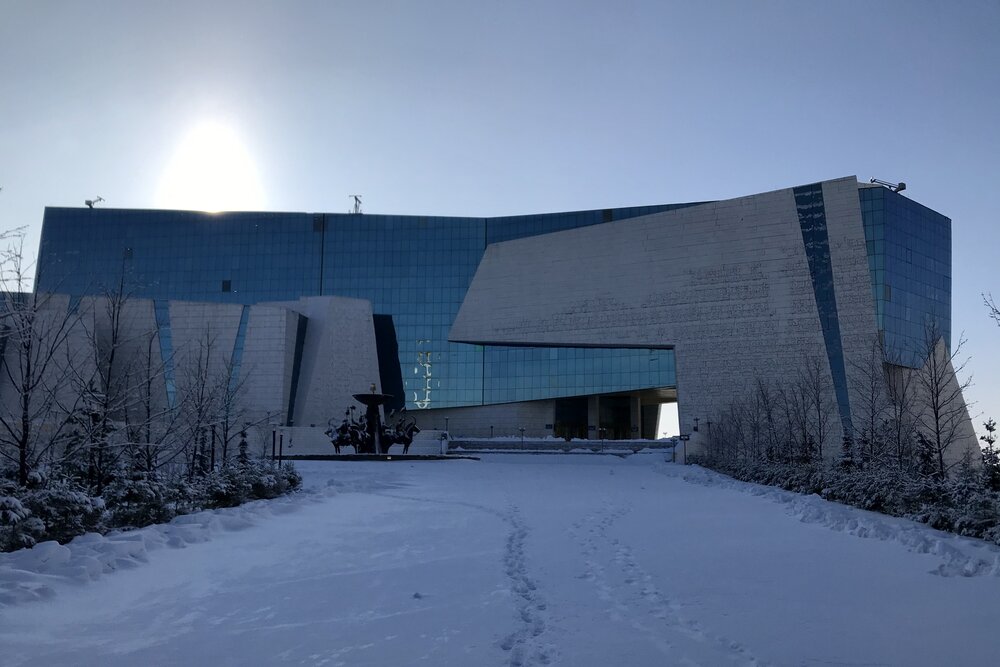
National Museum of the Republic of Kazakhstan
The museum brought to life many details about Kazakhstan’s diverse history and cultural heritage, from its origins as the home of various Persian and Turkic nomadic groups, to its subsequent subjugations under the Mongolians and Russians. Russian rule would eventually morph into the Kazakh SSR, part of the Soviet Union, upon whose dissolution in 1991 the present-day Republic of Kazakhstan emerged.
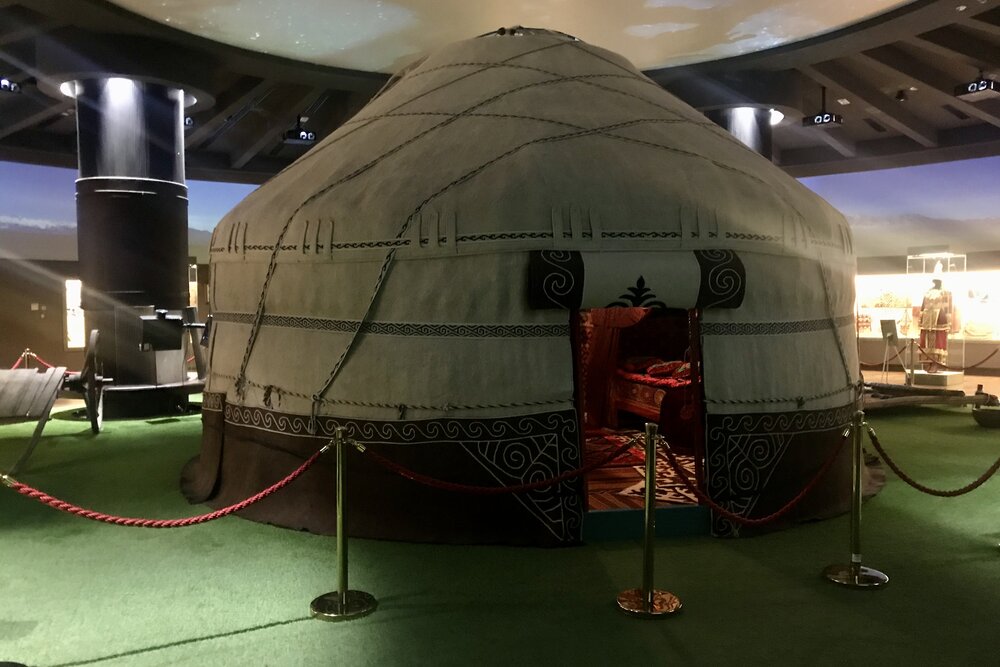
Traditional nomadic yurt
Today, Kazakhstan remains heavily influenced by its Russian and Soviet past: people from Kazakhstan are generally fluent in two linguistically distinct languages – Kazakh, of the Turkic language group, and Russian, of the Slavic language group – which are equally widespread through out the country.
In keeping with most of its history, Kazakhstan today might be described as a place of mixed identities, and I found it very interesting to learn about how the country grapples with that.
[foogallery id=”16730″]
It seems that there are simultaneously efforts to distance the country from vestiges of the Soviet past – for example, the 2015 government directive to replace the Cyrillic script with the Latin alphabet in the Kazakh language – while also retain control over the ethnic Russians in Kazakhstan and avoid pushing them away from the central national identity – for example, in relocating the capital in 1997 from Almaty in the south to Astana in the north, where there is a much higher concentration of ethnic Russians.
Of course, at the heart of all these efforts is one man, who conspicuously seemed to show up in every single photo in the museum of a significant moment in Kazakhstan’s history: that man Nursultan Nazarbayev.
While his rule is very much accurately described as an authoritarian one, he has also no doubt overseen a rapid period of growth that has established the country as a powerhouse in its region and a keen player on the world stage.
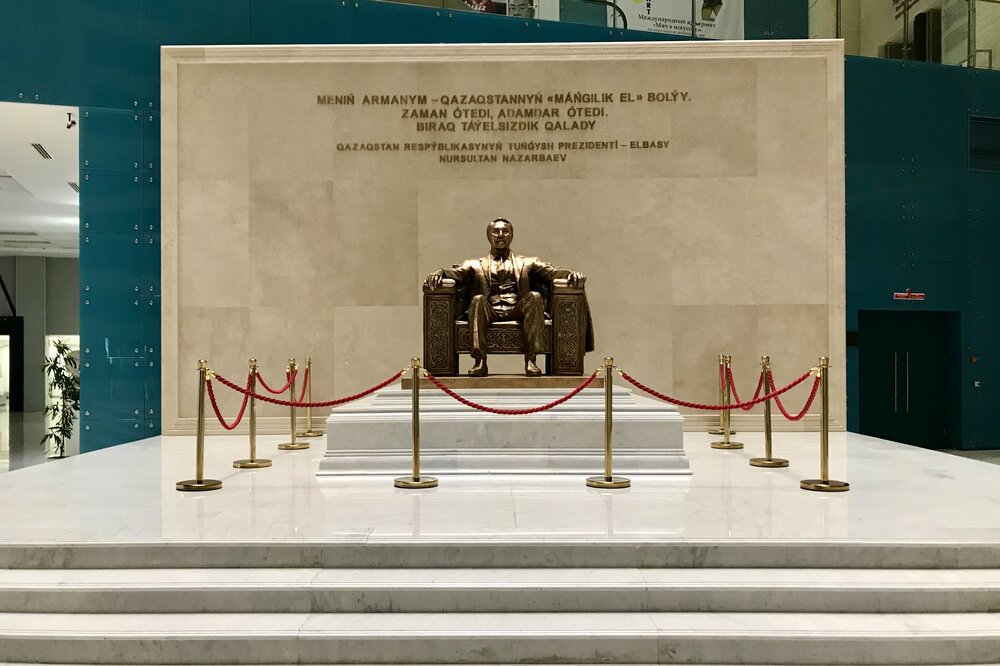
President Nursultan Nazarbayev cast in bronze
As I left the museum, one final exhibit revealed the origins of the country’s name: the Old Turkic qaz, meaning “wander”, combined with the Persian suffix –stan, denoting “land”.
It was the land of the wanderers, and that instantly made me feel a little bit more in my element as I jetted off to Almaty in the south of the country.
Day 3: The City in the Mountains
Nur-Sultan was a planned capital that sprung out of nothingness, and when you walk among its streets (or giant tent-shaped shopping malls), you get an impression that everyone is there for the cushy government or banking jobs.
In contrast, Almaty, Kazakhstan’s largest city, has been settled for thousands of years, and feels much more cosmopolitan and culturally diverse – much more “real”, as it were.
Despite that, the city isn’t exactly known for its world-class tourist attractions, and the two most interesting things to do seemed to be no more than two separate cable car rides. My agenda in Almaty, then, was basically to go with the flow and immerse myself in the pace of the city life, just as I would if I were at home.
After breakfast at the excellent Ritz-Carlton on the first morning, I headed out to the Shymbulak Mountain Resort for the first of those two cable car rides. Almaty is surrounded by mountains, and a few readers had recommended the ride up to the top of Shymbulak in order to get an appreciation for the city’s unique setting.
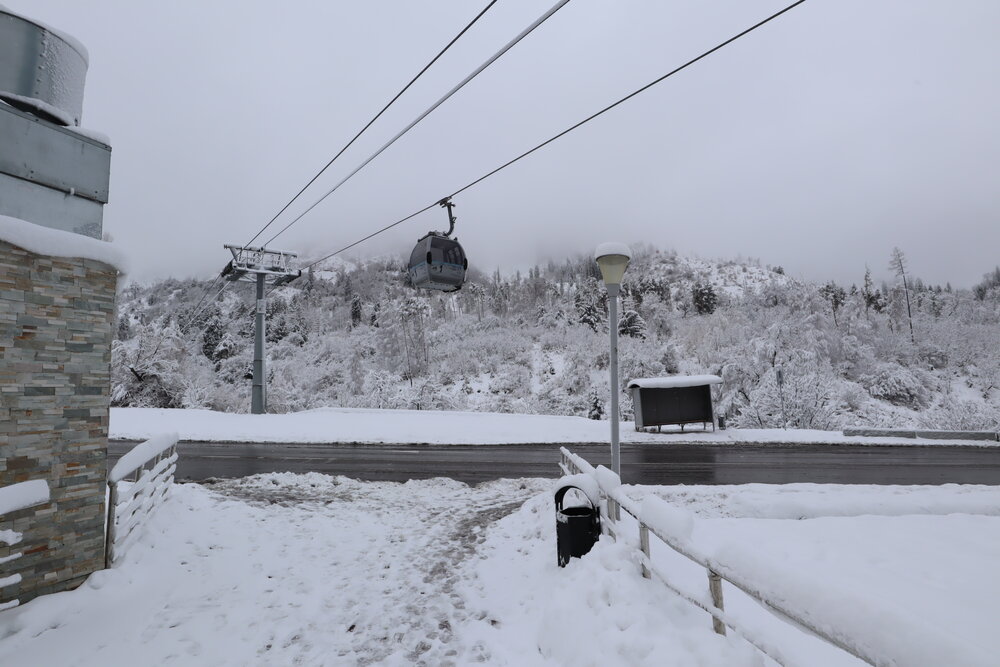
Shymbulak Mountain Resort
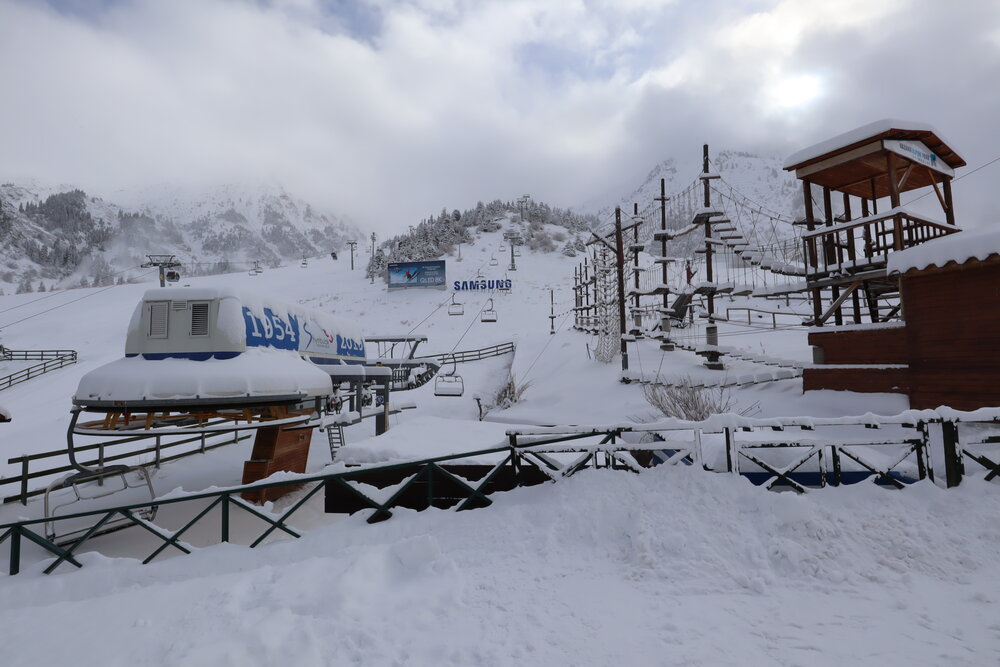
Shymbulak Mountain Resort
Unfortunately, the views on the ride up were limited by some heavy clouds, and the ski resort itself also seemed to be badly affected by an avalanche warning, since most of the visitors were there only to look at the mountain views rather than to hit the slopes. I certainly would’ve entertained the idea of an impromptu ski day!
The clouds cleared up significantly on the way back down, though, and I got treated to some killer views of the mountains in this part of Kazakhstan. I had never before realized how large and geographically diverse the country was – from the flat prairies in the north to the mountainous landscapes of the south, not to mention the steppes and deserts of central Kazakhstan and the shores of the Caspian Sea to the west, which I wouldn’t get a chance to visit on this trip.
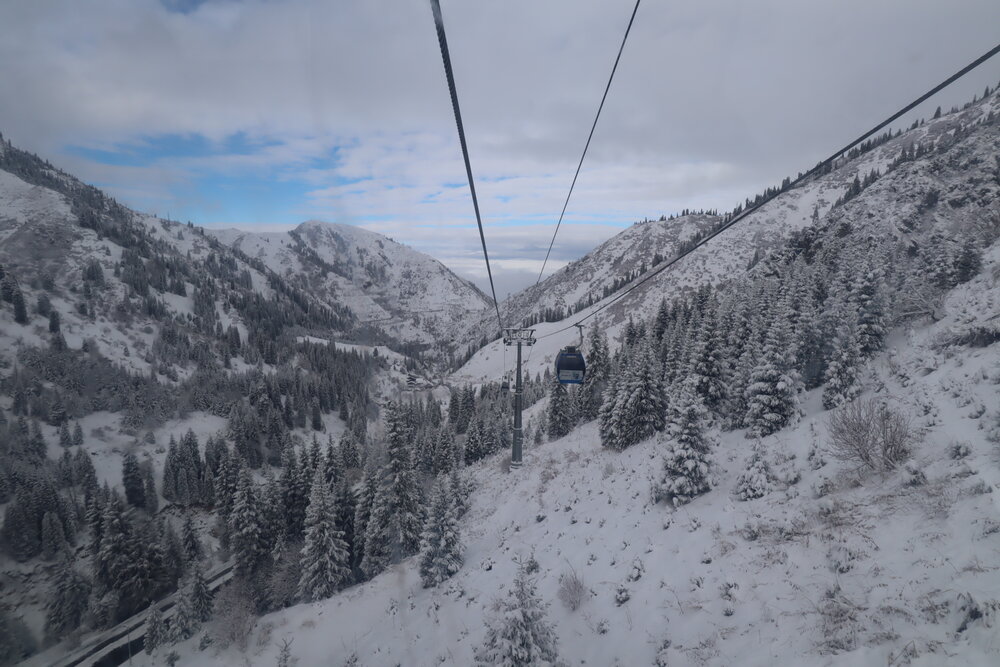
Shymbulak Mountain Resort – Cable car views
[foogallery id=”16734″]
After Shymbulak, I called another Yandex Taxi to bring me to the heart of the city, where I decided to stop for lunch next-door to the Ascension Cathedral, a Russian Orthodox cathedral in the middle of a public park. I had developed a liking for the architectural style during my travels in Russia a few years ago, so it was nice to see another example of it here in Kazakhstan, where Orthodox Christianity holds about a 25% minority compared to Islam.
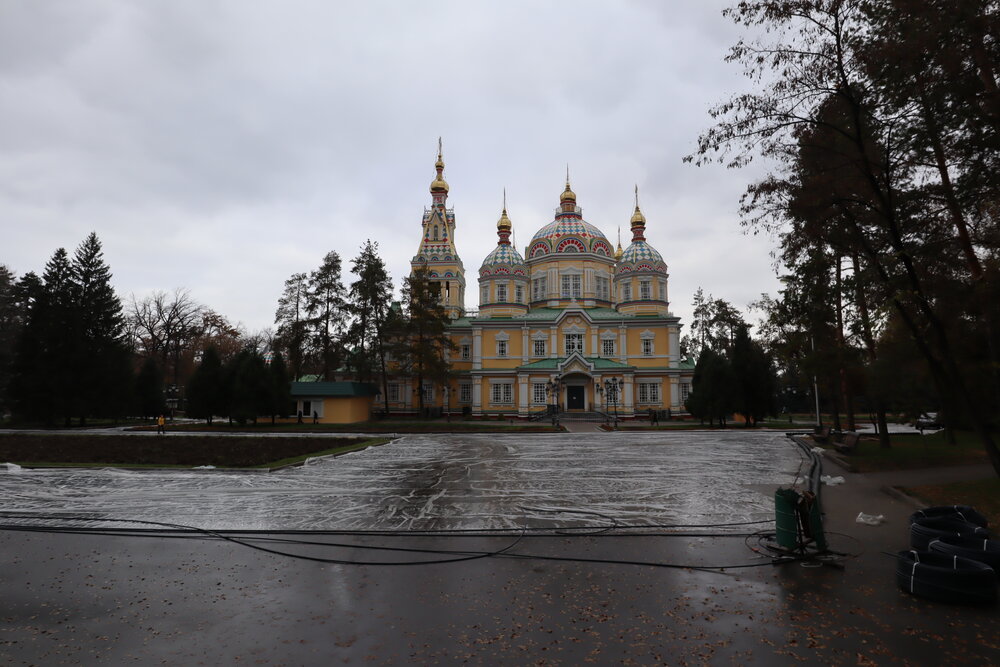
Ascension Cathedral
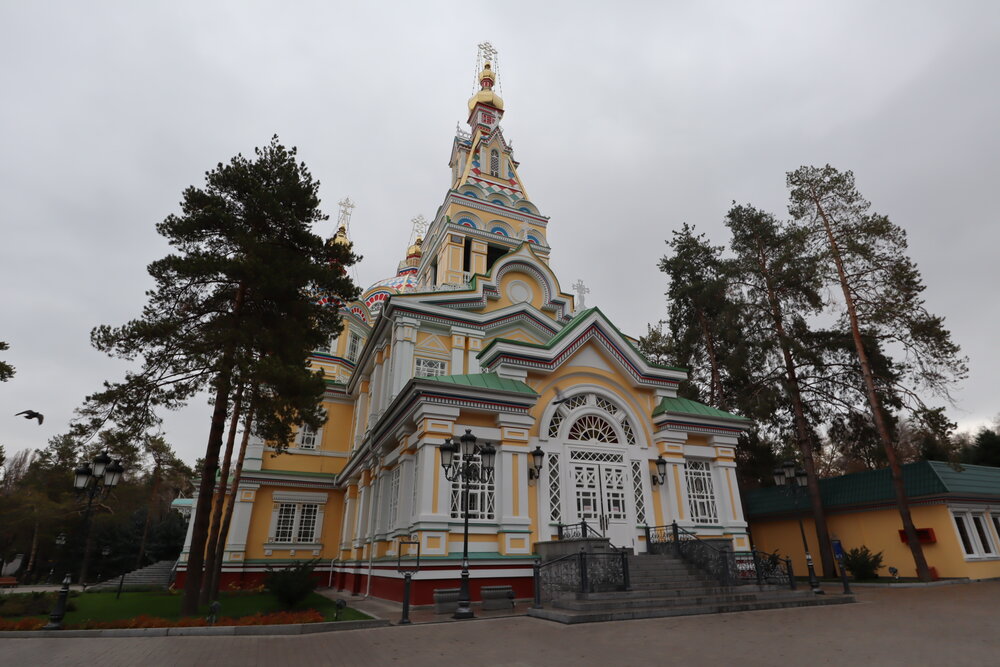
Ascension Cathedral
At this point, I was frankly a little bored of shuttling around in taxis, so I made my way back to the Ritz-Carlton via a combination of the Almaty Metro and a nice old-fashioned stroll along the pedestrian walkway by the Esentai River.
It turned out to be a very enjoyable journey before my jet lag-induced afternoon rest, since, in keeping with its geographical position, Almaty’s street scene struck me as almost exactly a halfway point between those of Moscow and Beijing – two cities of which I have very fond impressions.
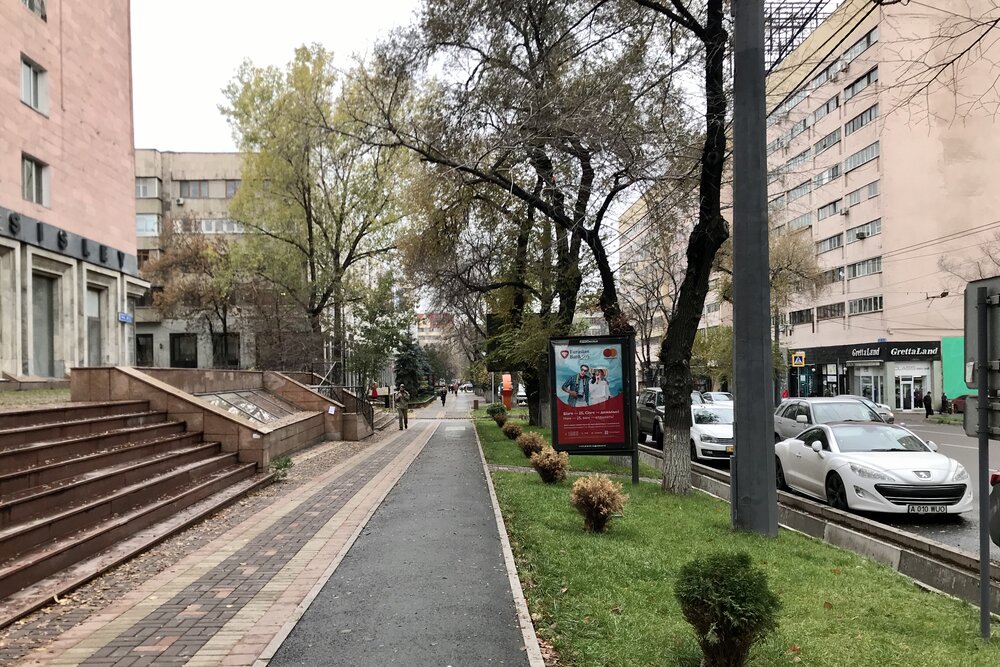
Almaty street scene
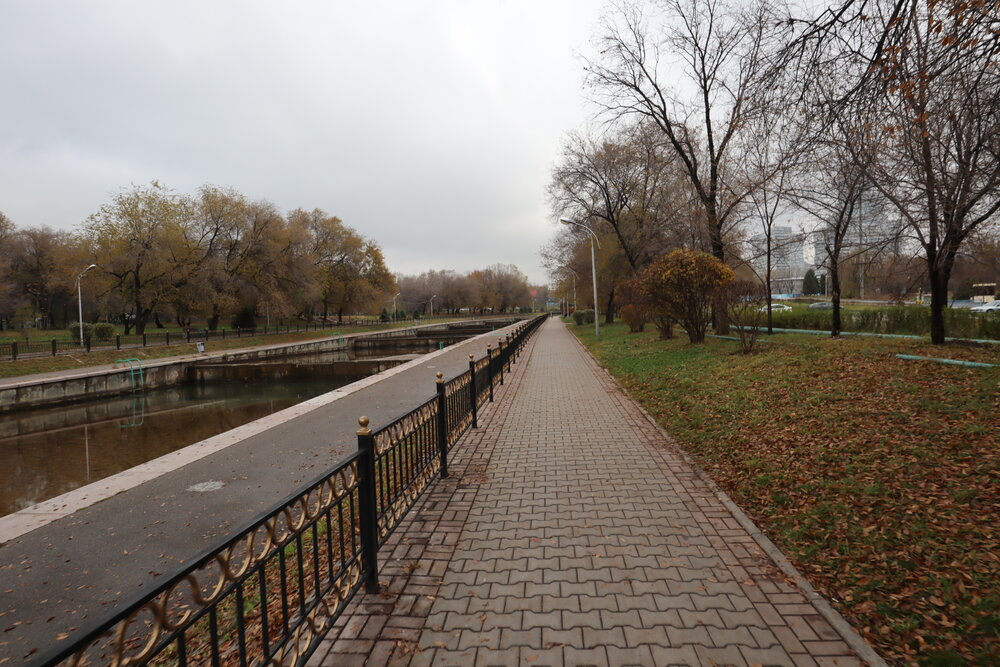
Almaty street scene
Day 4: Lunch with a Local
A friend of my dad’s happens to be based in Almaty, and upon finding out that I was visiting, my dad had naturally put us in touch. The friend would be out of town, however, and so invited his colleague, a local Kazakh guy by the name of Dauren, to meet with me in his stead.
After three days of slowly absorbing my new surroundings on my own, it was enlightening to be able to share those impressions and exchange perspectives with someone who was born and raised here.
We met at Line Brew, a restaurant that was recommended to me by a reader and which Dauren agreed was a nice spot for lunch. I decided to order a portion of horse meat, a local specialty which I definitely wanted to try, although it ended up tasting almost exactly like steak to me.
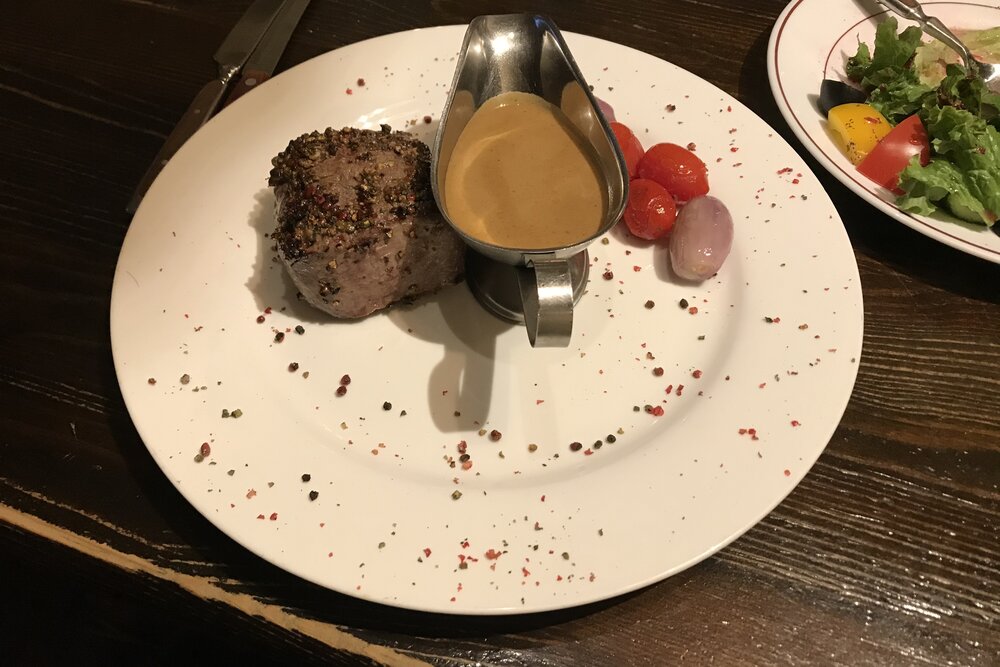
Horse meat at Line Brew restaurant
Speaking with Dauren added far greater depth to my understanding of Almaty and Kazakhstan as a whole. As I had suspected, there isn’t much noteworthy sightseeing to be done in Almaty; rather, most of the excitement lies a few hours outside of town in the form of Kazakhstan’s grossly under appreciated natural scenery – from the Big Almaty Lake, whose vantage point in the midst of the Tian Shan mountain range rivals that of Banff and Switzerland, to the otherworldly Lake Kaindy, home of the “drowning forest” of submerged trees growing straight out of the lake’s surface.
The other unmissable angle to Almaty – which, alas, I would also miss on this trip – was the city’s nightlife. This is a place that does not sleep on the weekends, and Dauren invited me to make sure my next visit coincided with a weekend stay in order to truly experience the city.
After lunch, Dauren graciously arranged a car service via his company to bring me to the Kok-Tobe Mountain for the rest of the afternoon. I thanked him for his time, and told him I had every intention of coming back to Almaty in the future.
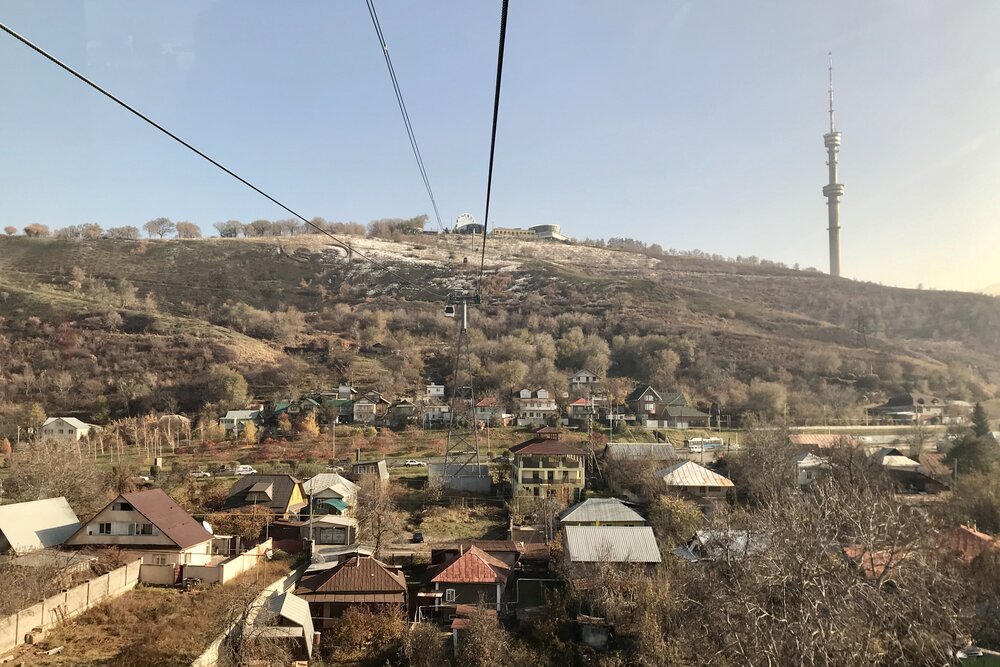
Kok-Tobe Mountain – cable car
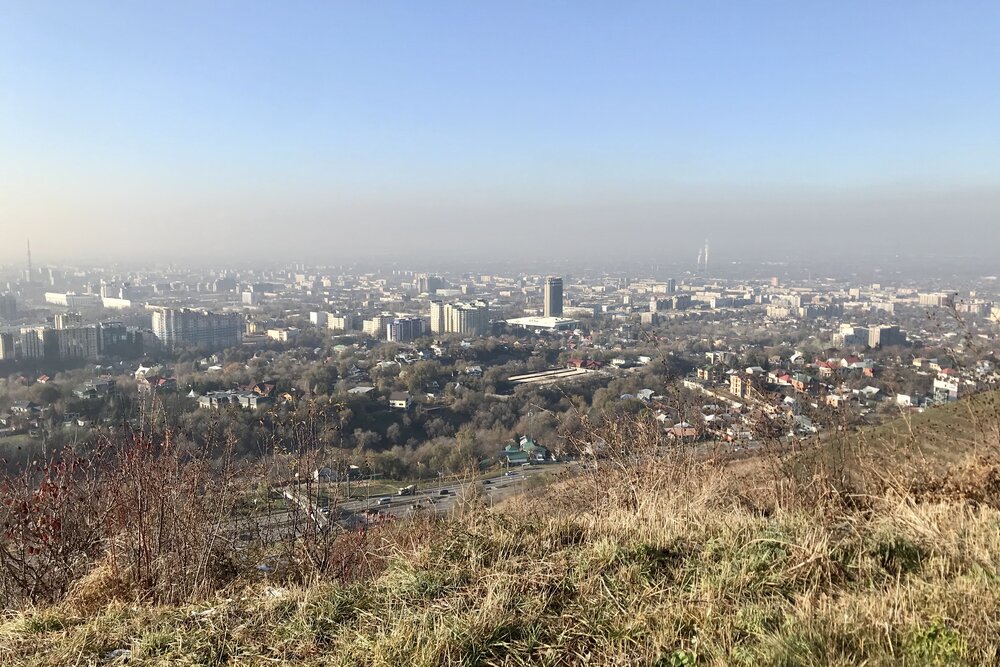
Kok-Tobe Mountain – City skyline
The cable car at Kok-Tobe would bring me to the recreation area at the top of the mountain, where I’d be treated to some panoramic views of Almaty to conclude my time here. I briefly wandered off to a quieter spot just below the summit, gazing across the cityscape, reflecting on a highly eye-opening trip, and savouring the fresh mountain air.
Conclusion
Travelling to Central Asia was an itch that I’ve been meaning to scratch for a very long time, so I’m very pleased I had the chance to see two very distinct sides to Kazakhstan in the form of its capital and largest city.
Almost paradoxically, Nur-Sultan was the more “interesting” place to visit on the surface, by virtue of its overwhelming concentration of gleaming skyscrapers that were, at once, both stunning and sterile. It’s definitely quite unlike any other place I’ve visited, but the lack of real substance behind all those ostentatious buildings means that I’m not really in a hurry to return.
Meanwhile, Almaty is much more in tune with our usual conceptions of an organic, cosmopolitan, and livable city. While I didn’t explore the city too deeply beyond the surface, I definitely saw enough that made me want to come back another time, perhaps as part of another journey between Moscow and Beijing for old time’s sake?
Overall, there are places around the world where I can leave after three or four days in the comfort that I’ve seen a little bit of everything, but Kazakhstan was most decidedly not one of those places. I look forward to the next trip along the Silk Road sometime later, and I hope to check off several other “Stans” when the time comes as well.
















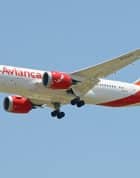
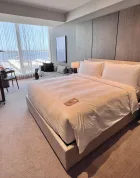

Looks awesome.
Great review! Always appreciate your insights.